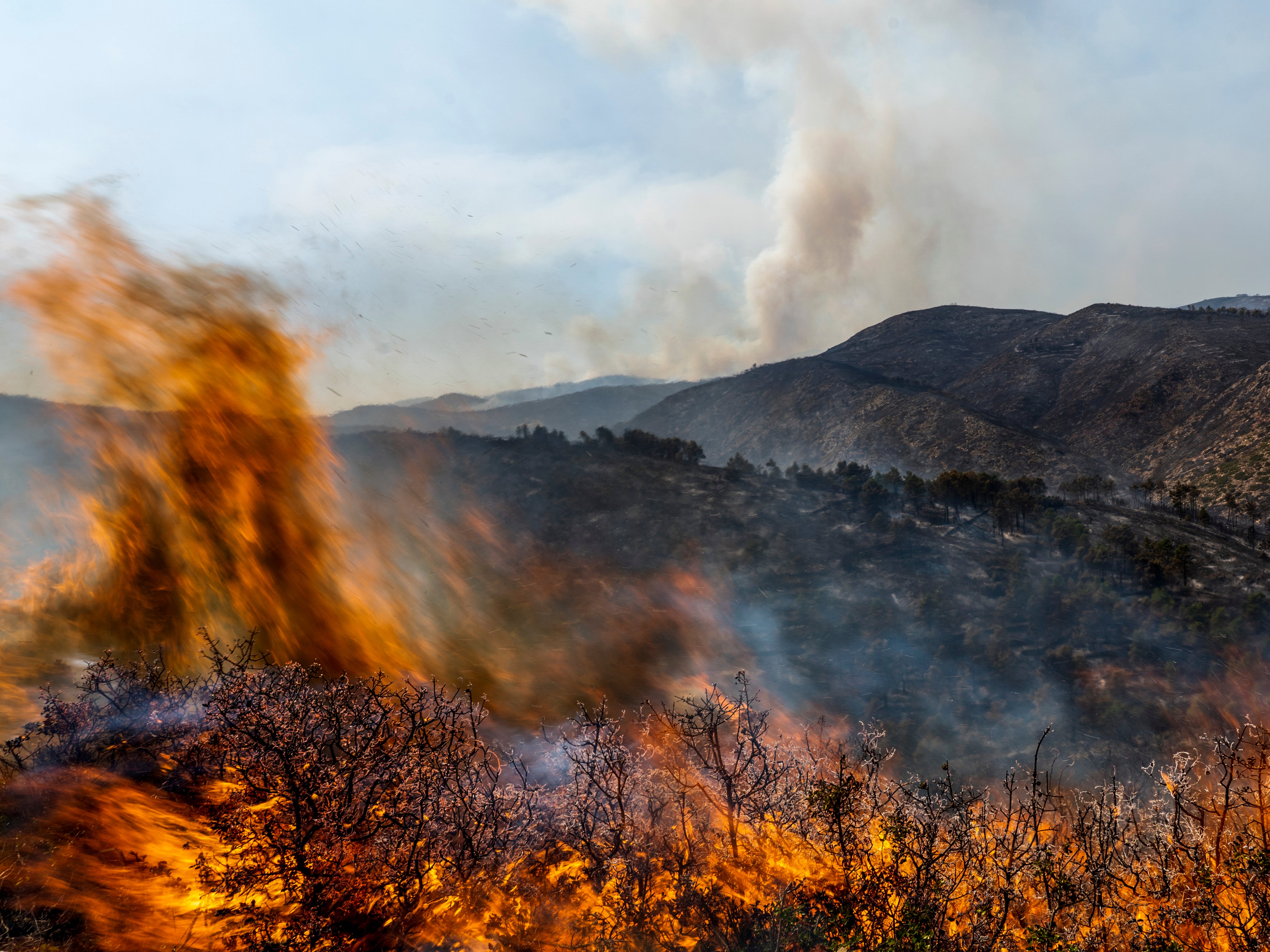Extreme weather drives European wildfire carbon emissions to record levels
Over 6 million tonnes of carbon from 425,000 hectares of burnt land have been released into the atmosphere this summer
The relentless hot dry summer has driven European wildfire emissions to the highest levels in 15 years, according to EU scientists.
Data measured by the Copernicus Atmosphere Monitoring Service reveals the total wildfire emissions from the European Union plus United Kingdom from 1 June to 31 August 2022 are estimated to be 6.4 megatonnes (6.4 million tonnes) of carbon, the highest level for these months since the summer of 2007.
That’s almost as much as Morocco’s tital annual emissions of 65 million tonnes.
In July and August 2022, the cumulative burnt area in EU countries was more than 425,000 hectares.
The service uses satellite images of wildfire locations along with Fire Radiative Power – a measure of intensity – to estimate emissions of the air pollutants that are present in the smoke.
The emissions recorded for summer 2022 were largely driven by the devastating wildfires across southwestern France and the Iberian Peninsula, the Copernicus team said, with France and Spain experiencing their highest wildfire emissions in 20 years.
In August, a major fire erupted in southwestern France, burning 7,000 hectares in a region that had already had more than 20,000 hectares of forest destroyed by fires in July.
In France as a whole, wildfires destroyed over 62,000 hectares from the start of the year to 3 September, representing six times the full-year average for 2006-2021, the Copernicus team said.
Wildfires increased by 500 per cent in parts of the UK during the heatwave and prolonged dry conditions over the summer. At the peak of the heatwave in mid-July, there were more fires in 48 hours than there were for the entire month of July the previous year.

Significant wildfires also hit other regions of Europe, including Slovenia, Czech Republic, Hungary and Germany.
In Germany, the burnt area amounted to 4,293 hectares, almost double the previous maximum of 2,437 hectares and significantly higher than the 2006-2021 average of just over 330 hectares.
Mark Parrington, senior scientist and wildfire expert from the Copernicus Atmosphere Monitoring Service, said: “The scale and persistence of the fires in the southwest of Europe leading to the highest emissions for Europe in 15 years was extremely concerning throughout the summer.
"The majority of the fires occurred in places where the changing climate has increased flammability of the vegetation such as in southwestern Europe, and as we have seen in other regions in other years."
He said the service "is now closely monitoring the current fire emissions and smoke transport in the Amazon region, and across South America, as the peak fire season approaches in the coming weeks”.

The scientists warned that the number of fires in the Amazon is at a 12-year high. Brazil’s National Institute for Space Research registered 31,513 fire alerts in the Amazon in the first 30 days of the month, making it the worst August since 2010. Above average daily fire emissions from the Amazon in Brazil in the second half of August, resulted in one of the highest total estimated emissions for the period since 2010 (along with 2019-2021).
In North America, wildfires which had started burning in Alaska in May continued through June and early July with notable fires in the Yukon and Northwest Territories of Canada.
In the Western United States, daily total fire intensity and seasonal total emissions were much lower for California, Oregon, Washington, Idaho and Montana in comparison to the summers of 2020 and 2021 and were more typical for the time of year, according to the data.
Similarly, in Russia, lower numbers of fires helped reduce the level of emissions recorded in recent years, despite a number of "devastating fires", the service said.
Join our commenting forum
Join thought-provoking conversations, follow other Independent readers and see their replies
Comments



Bookmark popover
Removed from bookmarks